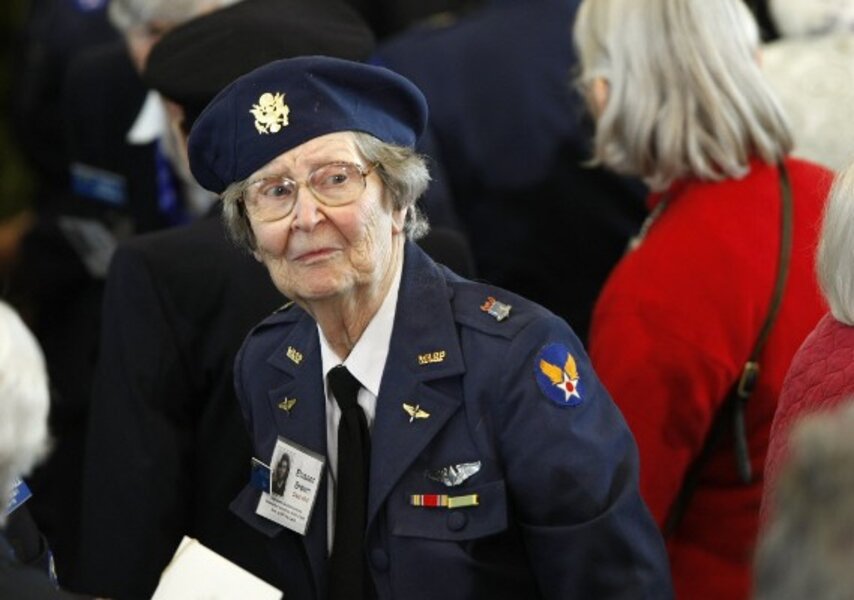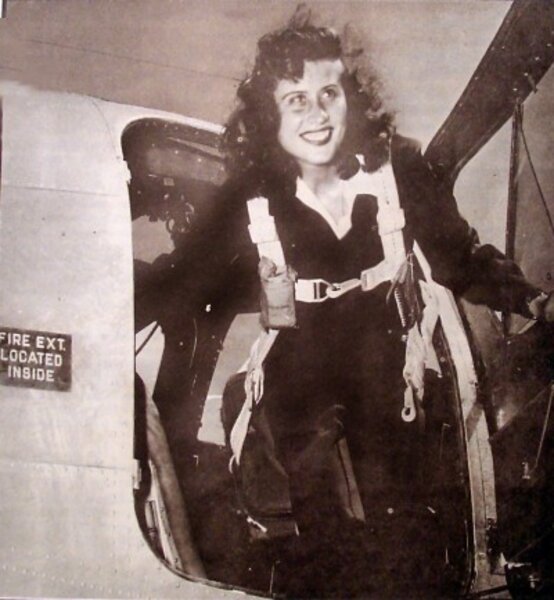Decades later, women pilots from World War II get their due
Loading...
| Washington
It took them more than 60 years to be recognized after their government attempted to hide their service, but on Wednesday, hundreds of female pilots who flew missions during World War II finally got their due.
More than 1,000 civilian female pilots or WASPS – Women Airforce Service Pilots – were given the Congressional Gold Medal at a ceremony on Capitol Hill. The “strength, spark, and unprecedented moxie” of female pilots helped fill the pilot shortage stateside as men were sent overseas to fly combat missions, Rep. Susan Davis (D) of California, said at the ceremony.
These women volunteers, many of whom have since died, paid for their own pilot training and served the military during the early years of World War II in hopes of joining the military. They tested and ferried aircraft, freeing men for combat flying.
IN PICTURES: WASPS: Female pilots in World War II
Instead, two years later, the program ended and the women were summarily sent home when the military didn’t need them anymore. Their service was effectively sealed from the public for years. Then the US Air Force announced in 1976 that female pilots would begin flying jets for the first time, essentially negating the WASP program.
That angered many of the female pilots, who promptly organized an effort to have their story told. Later, their records were opened, and last year President Obama signed a bill to honor the women with the Congressional Gold Medal, the highest civilian honor Congress can bestow. About 300 of the pilots who are still alive were invited to Washington for the event.
“All we ask is that our overlooked history would no longer be a missing chapter” in the history of aviation and the US, said Deanie Parrish, who accepted the gold medals on behalf of all WASPS.
Many of the women said they never thought what they did was a big deal and they never sought the recognition. On the other hand, the government’s attempts to deny their service within the military prompted efforts to push for greater awareness of what they did.
“They didn’t think it was a big deal,” said Robert Bain, whose mother, Susie Bain, a WASP, traveled from Austin, Texas, to attend the event Wednesday.
Mr. Bain recalls a story his mother tells about the first time she flew solo. It took her three times to land, in part because she had not been properly trained. Years later, she would marvel that she had become a pilot and her husband, who tried to fly for the military, flunked out, Robert Bain recalled jokingly.
Barry Smith, a WASP from Avon Park, Fla., recalls how so few people knew about the program.
“Nobody knew about us,” she said after the ceremony Wednesday. “No one knew I was flying this twin engine planes all over the United States and I was a civilian.”
For many of the WASPs, there is a hint of can-do spirit mixed with an early feminist pride. Ms. Barry said she flew planes as a test pilot, essentially serving as a guinea pig.
“I tested them for the men to fly,” she said, catching herself in the joy she still takes in ribbing her male pilot counterparts. “I had to add that.”






